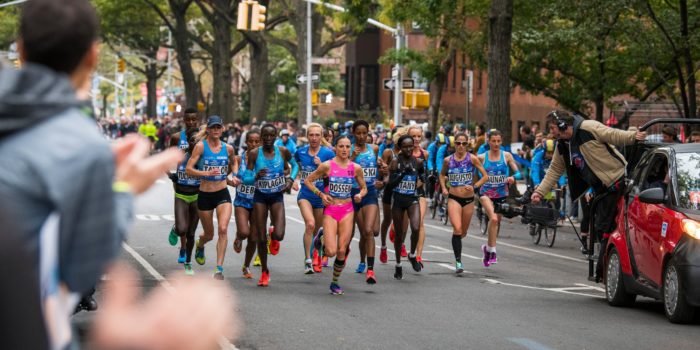In order to separate and clarify the elements of breakthrough marathon performance, we need to acknowledge some of the most widespread problems.

Exciting Times in the Half-Marathon
Every year, the organizers of the Copenhagen Half Marathon assemble one of the world’s deepest fields, boasting a large number of sub-60 minute men. The women’s race has superb depth too as it contains numerous runners with personal bests faster than 68:00. It’s very exciting to see this kind of talent assembled for a single half-marathon event. It makes it possible for a men’s and women’s half-marathon world record to be run in the same race, on the same day in Denmark.
A Sister Distance
Of course, the half-marathon is attractive to marathon runners because of its ease of recovery and to classic road runners because of its role as a springboard to the full marathon. But the half marathon (at 13.1 miles) is perhaps even more relevant to the 10K (at 6.2 miles) than the marathon (at 26.2 miles).
Some coaches advocate running 10K races at planned half-marathon pace, but that’s way too easy for a race. You can go ahead and do it on your own at some point during your build-up period. Running your best 10K pace for 5-10 minute work intervals with your form and breathing totally under control will make half-marathon pace feel slightly faster and easier to sustain.
Running a few 10K races or time trials during the eight weeks before an important half-marathon can be excellent for your preparation too. But no less than two weeks before the event, please. So your neuromuscular system can hold the good form and fitness you’ve gained from those hard efforts.
Know Your Pace
Most well-trained half-marathoners will run around 15 seconds per mile slower than 10K pace for 13.1 miles, as long as they don’t start too fast and they hold a relatively even pace throughout the race. Starting the race too fast will inevitably result in paying for that enthusiasm in the later stages.
Let’s face it though, almost everyone goes out too fast. That’s because the first mile almost always feels too easy! During the first few minutes of the race, you don’t feel much of the discomfort associated with an overly fast pace because starting line adrenaline and the excitement of racing drown out any possibilities of future pain and fatigue.
Once the human physiology of going out too fast takes over, the negative consequences include form deterioration and “energy leaks.” The most serious leak is the negative psychological impact on the nervous system. The breach in the runner’s nervous system triggers a higher than desired heart rate, accompanied by the cascade of stress hormones that occurs when someone moves into an elevated heart rate zone prematurely. As early as the third mile, the runner will be struggling to hold the overall goal pace. Positive self-talk, such as “I’m going to do this!”, is replaced by the confidence-eroding voice, “Oh no. Did I go out too fast?”
Natural Restraint
You can avoid this trap by exercising more patience and restraint in the first mile. A quick check of the watch is advisable. Pace judgment training sessions where you work on speeding up and slowing down while concentrating on relaxed exertion, rhythmic breathing and leg turnover come into play here as well.
If you already know that you’re reluctant to push yourself or if you realize that you have been a little too conservative in past races, hoping to save your strength for the late stages, go ahead and increase your starting pace, but by a only few seconds per mile. This pacing strategy will put you in good stead for a strong performance, and you will enjoy passing the other runners late in the race who were more reckless in the early miles.

Results oriented reading
Running Science by Owen Anderson
Elite running coach Owen Anderson presents this comprehensive work in a compelling way for runners. A PhD and coach himself, Anderson has both a great enthusiasm for sharing what scientific studies offer the running community and a keen sense of what’s really important for today’s informed runners to know.



